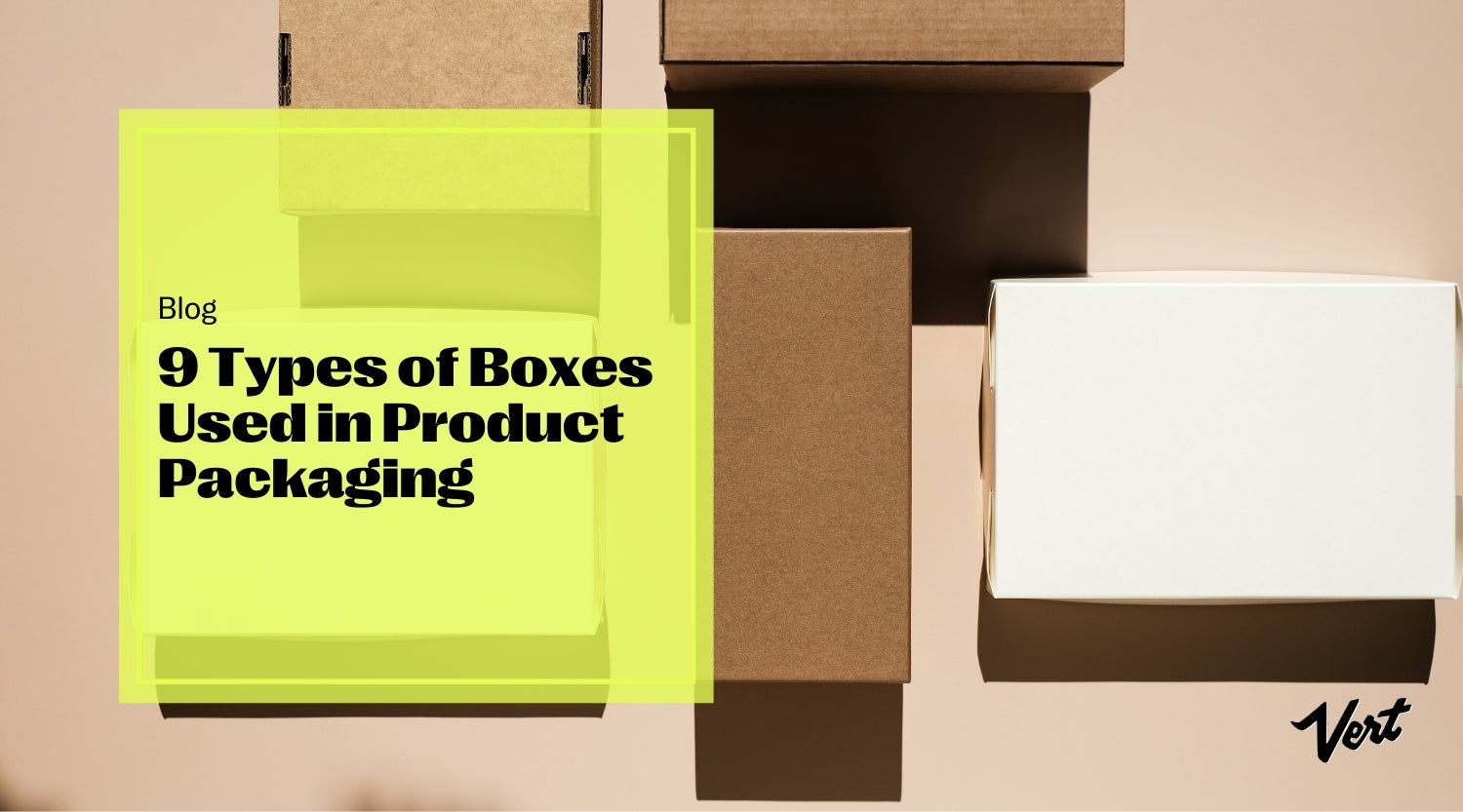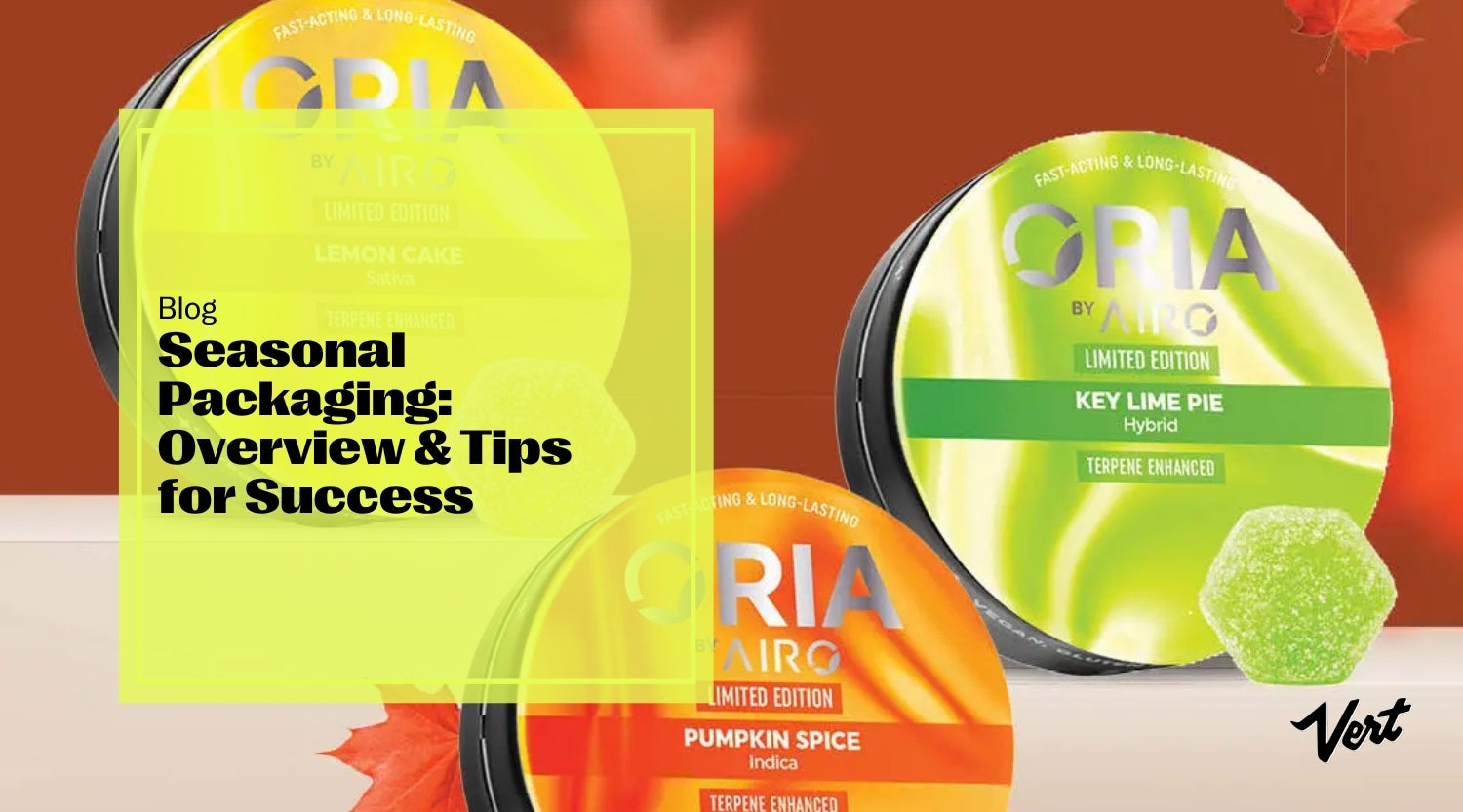There are various types of boxes available at different price points for packaging products. They serve distinct purposes, and some are better suited to certain kinds of goods than others. An understanding of common box types, their physical attributes, and use cases will help you find the right solutions for packaging and marketing your SKUs.
1. Primary Boxes
Primary boxes are those that come into direct contact with the product. The word 'primary' comes from the label given to the first of the three main types of packaging used to protect, display, or ship a given item.
Products that are packaged in a primary box include things like tea bags, oats, dried cat treats, and vape pens. Outside of the consumables arena, you’ll also see them used for electronics, jewelry, toys, and flat-pack furniture.

Different products require varied amounts of protection, therefore needing a specific choice of box material. For small, light, and tough items, folding cartons are usually the ideal choice. As for heavier or more fragile items that require more protection, a corrugated box is the way to go. Choosing the right box for the job is imperative.
2. Folding Cartons
Folding cartons, a.k.a. carton boxes or paperboard boxes, consist of a thin, flexible, single-layer piece of cardboard that folds into a box shape. Cereal boxes are a prime example. You might see this type of box used to hold food products such as health bars or supplement sachets. They are available in custom or standard sizes.

3. Rigid Boxes
A rigid box is made by cutting a chipboard core and bending it to fold into the desired box shape. Rigid boxes offer more protection for their contents, as they do not flex or dent. These boxes are commonly used to package valuable items, such as new phones and designer jewelry.

They’re also perfect for fragile consumable items like pre-rolls, as they preserve product integrity. These boxes not only provide safety, but they also bring a sense of luxury and quality to the experience.
4. Slider Boxes
Slider boxes have a section that slides, as the name suggests. They are generally made from the same materials as cartons or rigid boxes.

There are various designs of slider boxes, all with a tray that pulls out of a sleeve. The tray may be able to emerge from either side of the sleeve, such as with a matchbox, or it could slide out from only one end. The latter type often has a small loop or ribbon to pull it by, which adds a touch of class.

Branding tip: Slider boxes offer a bit of novelty and create a packaging experience for the consumer, making them feel like they're opening a gift. Take advantage of this box type for premium and visually beautiful SKUs that come in a long, slender shape.
5. Corrugated Boxes
Corrugated boxes are made from corrugated cardboard, which has at least three layers: inside and outside liners, and a piece of fluting between them. Some may have multiple layers of fluting, all with a liner in between.
What is corrugated packaging used for? This strong and lightweight material makes these boxes ideal for fragile, large, or heavy items, such as laptops, flat-pack furniture, or beauty products in glass jars that you don’t want to squash or break during shipping!

These boxes are very common as they're sturdy while not being rigid, and give a little padding and shock absorption. That’s why they’re often used as moving boxes. Corrugated boxes come in various sizes with different opening configurations, but the cardboard itself always follows a particular construction method.
6. Corrugated Shippers
Corrugated shippers are a specific type of box made from corrugated cardboard. Also known as mailer boxes, these boxes are the type where the lid is a flap across the top, and fastens by folding over the side with tabs that slot into the front of the box. It is a very secure style of box and won't open by accident.

As these are sturdy and lightweight, as well as giving a premium look, they are often used as gift boxes, perhaps containing trail mix bars or dried fruit. They won’t squash or break while being shipped to retail stores.
7. Child-Resistant Boxes
Child-resistant boxes are a type of packaging that is easy for adults to open, yet challenging for children or pets. They provide an all-important level of safety, as well as complying with the requirements for regulated products.

The ASTM D3475 voluntary standard for child-resistant boxes (ASTM Type X Box or Tray Package) covers two specific opening mechanisms: (1) Squeezing and pressing while lifting the lid, and (2) inserting a key and then sliding or pulling out the tray. These boxes are not necessary for everyday items, but become important when packaging things like cannabis edibles, to keep the whole family safe.
8. Display Boxes (POS Displays)
Display boxes or point-of-sale boxes hold multiple units of the same item. These boxes are not meant to go home with the customer. Instead, they are intended to present the products in an eye-catching way on shop shelves or at the checkout.

Think about how much easier it is to find the chocolate bar you're after in the candy aisle when each different type of bar is in its own branded display box. Now think about the box of small items at the cash register that are just asking to be added to your purchase. Those encourage buyers to spend a little more.
If you had display boxes or POS displays for your products, how many more impulse buys do you think customers might make? These boxes and displays are inexpensive, as they're usually made from single-layer cardboard, while being a great way to advertise your brand and add some pizzazz to your retailers’ checkouts.
9. Case Packs
Case packs are paperboard cartons that hold a bulk quantity of the same item. Ordering custom packaging allows you to buy case packs that are tailored to your needs, whether that's fitting ten or one hundred of an SKU in the same box.

These packs, similar to display boxes, are another great way of adding your branding to the shelves, while also being useful for grouping multiple items of the same type. Case packs make it easy for cashiers to know how many of the items to put through the register, saving time and mistakes.
Bonus benefit: These boxes will also sit on the shelves of the customer's home for some time, meaning they'll be regularly seen and showcase your branding to family members and visitors. What an easy way to market your products day after day!
A Box Type for Every Need
There are many different box materials and configurations, lending themselves to a wide variety of product packaging requirements. Understanding which types of boxes suit your needs will allow you to go to packaging suppliers with confidence and clarity, leaving more time for branding and premium print customizations at the end.
Keep in mind the durability of various box materials, the quality of the print finish, and turnaround times when comparing quotes. The best packaging supplier will ensure that your boxes arrive on time, in perfect condition, and with the qualities they need to catch shoppers’ eyes on the shelves.



Leave a comment
This site is protected by hCaptcha and the hCaptcha Privacy Policy and Terms of Service apply.